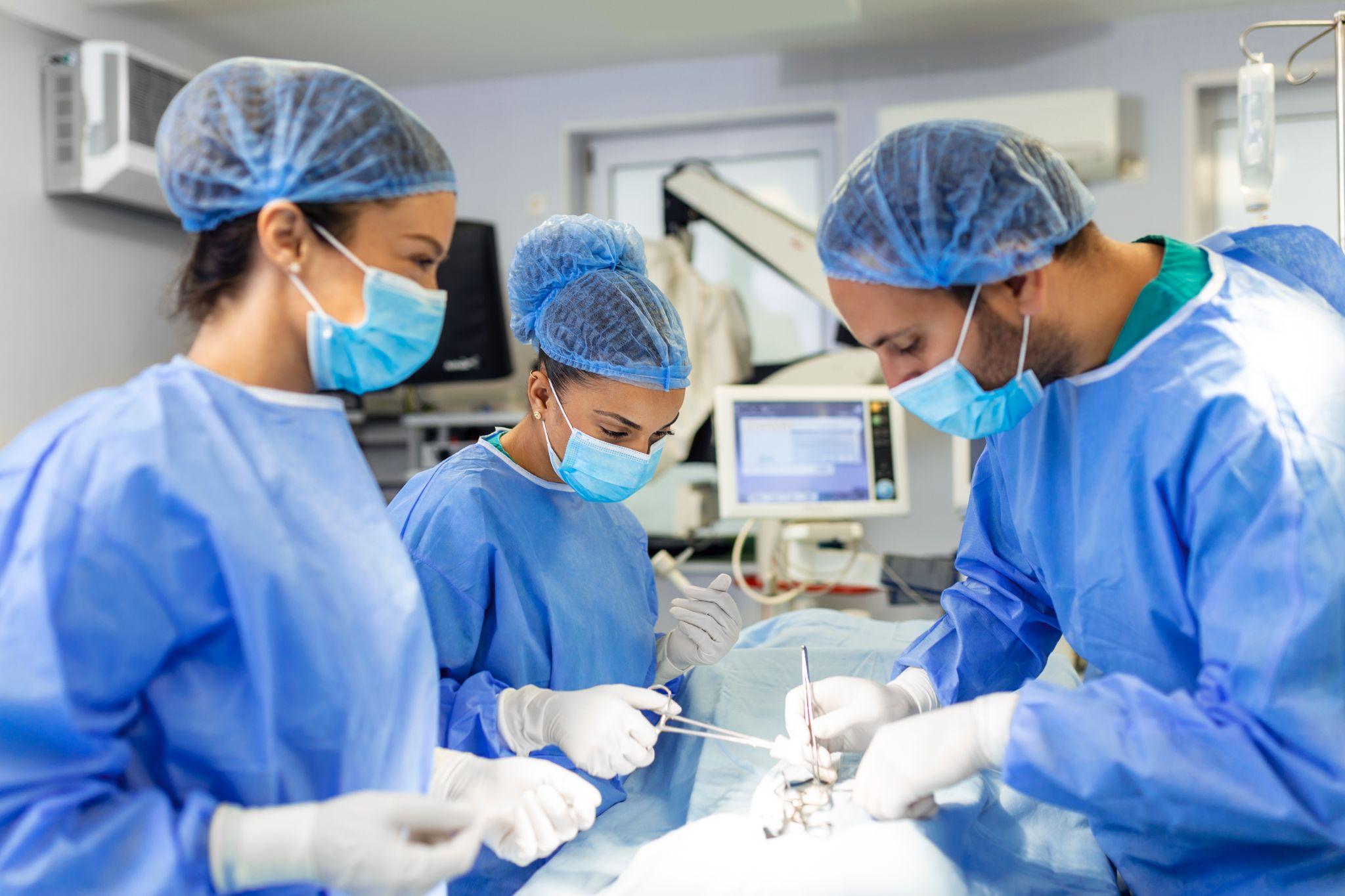Revision Surgery: What It Is and Why You Might Need It

Revision surgery is performed to replace or repair a failed joint implant from a previous procedure.
Joint replacement (of the hip, knee, shoulder, etc.) is a routine and successful procedure for disabling arthritis, painful joint disorders, and loss of function. Patients typically experience relief, mobility, and quality of life.
But as time passes, there can be complications with the artificial joint (implant). If there are major problems, a revision surgery will be necessary. Revision surgery is resurfacing or repairing an old joint replacement. Revision surgery is more complex than the original (primary) surgery and is only done when the benefits outweigh the risks.
Here is what revision surgery is, why it's done, symptoms to look for, how it is done, recovery, risks, and what you can do to reduce your odds of ever needing it.
What Is Revision Surgery?
Revision surgery is when a joint that has already been replaced (hip, knee, shoulder, etc.) is repaired surgically again. Portions of the original implant can be removed, exchanged, or realigned to repair problems.
First (primary) joint replacement is where a doctor does the damaged joint replacement for the first time.
Revision is "going back to" and repairing or replacing part (or all) of that joint replacement, because of failure, wear, complication, or damage.
Revision surgery is usually more involved, longer, may require special implants, and recovery is harder.
Common joints requiring revision
The most commonly revised joints are hips and knees, although shoulders and other joints may also require revision if issues are present.
Why Are Revision Surgeries Necessary?
Implants can fail or cause issues after a period of time. Some of the primary reasons are:
Wear and tear of the implant
The artificial components (especially plastic or polyethylene) break down over time. Tiny particles may cause irritation to surrounding bone, resulting in bone loss or "osteolysis."
Loosening of the implant
Even when the implant was well fixed initially, bone may progressively deteriorate or shift, causing the implant to loosen. When an implant is loose, function and comfort are lost.
Infection around the joint
One of the more serious causes. Bacteria can lodge around the implant (sometimes years later) and lead to pain, swelling, and instability. Infection generally requires removal and replacement of the implant, sometimes in staged procedures.
Dislocation or instability
The artificial component can become loose, with the artificial parts failing to settle into place or the tissues around not well holding them. This leads to "giving way," recurrent subluxations, or abnormal motion.
Fracture around the implant
The bone supporting the implant can fracture (periprosthetic fracture). If that happens, revision surgery is often needed to repair bone and resurface or stabilize the implant.
Other complications
These are unusual allergic reactions to the material of the implant, mechanical failure (bent components), component breakage, malalignment, and further deterioration of arthritis in unreplaced regions of the joint.

Modern techniques and advanced implants have improved the success rate of revision surgeries.
Warning Signs You May Need Revision Surgery
It might not be obvious, but there are warning signs that something is wrong with the replaced joint. They include:
- Continuing or increasing joint pain, not relieved by normal methods
- Swelling or stiffness that fails to improve or persists in coming and going
- Difficulty in walking, climbing stairs, or less mobility than previously
- Instability – the joint does not feel securely supported or feels as though it is "giving way"
- Visible deformity (joint misalignment) or limb length difference
- Abnormal joint sounds like clicking, popping, or grinding
- Heat, redness, or signs of infection (fever, drainage), especially in the joint area
If you have any of these symptoms after a joint replacement, you should see your surgeon to be evaluated.
How is Revision Surgery Done?
Revision surgery is more complicated than primary replacement. This is how it usually happens:
Pre-surgery evaluation
Your medical history, symptoms, and overall health are reviewed by physicians.
Imaging is done (X-rays, CT scans, MRI) to assess implant placement, bone quality, and surrounding anatomy.
Blood and joint fluid tests can be used to screen for infection
Old implant removal
The prosthesis (partial or complete) and the cement or fixation materials are carefully removed by the surgeon. This must be accomplished with caution to preserve as much bone as possible.
Preparation of bone and tissues
Due to wear, bone loss, or defect, the surgeon may need to rebuild sections of bone with grafts, metal augments, or special implants to stabilize or space out weak bone.
Insertion of a new implant
A new implant (typically a revision-type prosthesis) is placed. These may be longer, bigger, or specially constructed with stems or support structures to accommodate weaker bone or altered anatomy.
Closure and soft tissue repair
Surgeons also restore or balance surrounding ligaments, tendons, and soft tissues to achieve stability and normal motion.
As a result of the additional complexity, revision surgeries are more time-consuming and technically challenging than primary replacement.

Recovery after revision surgery may take longer compared to the first joint replacement.
Recovery After Revision Surgery
Recovery after revision is more demanding in comparison to a primary replacement.
Hospital stay
You can stay for several days (or more), depending on complexity, compared to a short hospital stay in some early cases.
Pain control and wound management
Pain is controlled carefully with drugs, and wound management is necessary to prevent infection.
Physiotherapy and rehabilitation
Early mobilization (with support for walking) is typically started as soon as possible. A tailored rehab regimen is necessary to recover strength, motion, and function.
Rehabilitation progresses more slowly, and the therapists must consider previous surgery, scar tissue, and bone quality.
Recovery time relative to the original surgery
It often takes longer to restore strength and motion.
Full recovery can take a few months (6–12 months or more, depending on the case).
There can still be some residual pain or limitation, especially if softtissue damage or bone loss was widespread.
In some patients, full pre-failure function may not be completely regained. Most patients do see significant improvement in pain relief and motion.
- Modification of lifestyle to protect the new implant
- Avoid high-impact activities or overloading
- Maintain a healthy weight
- Follow the activity instructions of your doctor
- Regular follow-ups and monitoring
- Wear protective devices and develop supporting muscles around them

Revision surgery helps patients regain mobility and improve overall quality of life.
How to Reduce the Chances of Revision Surgery
While it is impossible to prevent all revision surgeries, there are some measures that reduce the risk:
- Choose a good-quality, experienced, skilled surgeon and good-quality implants
- Proper alignment and good surgical technique
- Strictly follow post-surgery instructions and physiotherapy
- Normal weight (to reduce stress on the joint)
- Reduce too many high-impact and risky activities
- Manage medical conditions (smoking, diabetes, and bone quality) to reduce infection and bone quality complications
- Go for regular follow-ups so problems are caught early and solved prior to becoming serious
Conclusion
Revision surgery is technically "redoing" a joint replacement because of wear, loosening, infection, instability, fracture, or another complication. More challenging, riskier, and with slower healing than primary joint replacement, but in most cases, it can restore pain relief, stability, and function.
Not everyone with a joint replacement will need revision; many implants last many years without issues. Regular monitoring and taking care of your joint and overall health help reduce the risks. If symptoms such as increased pain, swelling, instability, or changes occur, consult your orthopedic surgeon promptly. With the right planning, surgical skill, and post-operative care, revision surgery can be a valuable option to regain quality of life.
FAQs
What is revision joint replacement surgery?
Revision surgery is a procedure to repair, replace, or remove parts of a previously installed joint (hip, knee, shoulder, etc.) when problems arise. It is more complex than the original replacement because of changed anatomy, bone loss, scar tissue, and the need to remove old components.
How can I determine whether I need revision surgery?
Possible signs are recurring or escalating pain, swelling, stiffness, instability, or "giving way" of the joint, restricted mobility, visible deformity, clicking/popping sounds, or infection symptoms. In case they occur, your surgeon will evaluate with imaging and tests to confirm.
Is revision surgery riskier than primary joint replacement?
Yes, revision surgery is more dangerous. It is technically more complicated, generally longer, with higher risks of infection, bleeding, bone fracture, wound complications, limited motion, and in some instances, a higher probability of complications.
How long does it take to recover from revision surgery?
Recovery is slower. Full recovery may take many months (6 to 12 months or more in some cases). You’ll start therapy and walking as soon as possible, but regaining full strength and motion takes more time than the first replacement.
How many times can a joint be replaced?
There is no specific number, but with each revision, the complexity and risk increase. Two or more revisions in a patient's life will occur for some patients, although surgeons attempt to get the longest lifespan from each implant.
Can revision surgery be prevented through proper care?
In the majority of cases, yes. Accurate surgical technique, proper alignment, appropriate implant choice, adequate rehabilitation, weight control, removal of high-impact activity, early correction of lesser issues, and regular orthopedic follow-up can reduce the likelihood of needing revision.